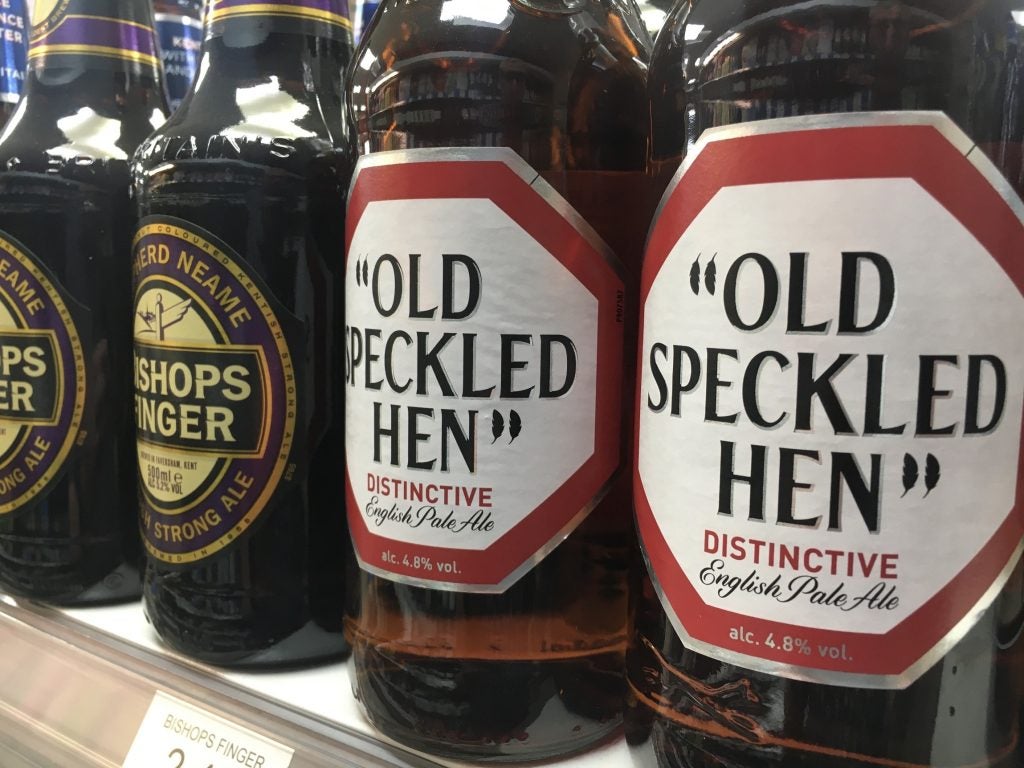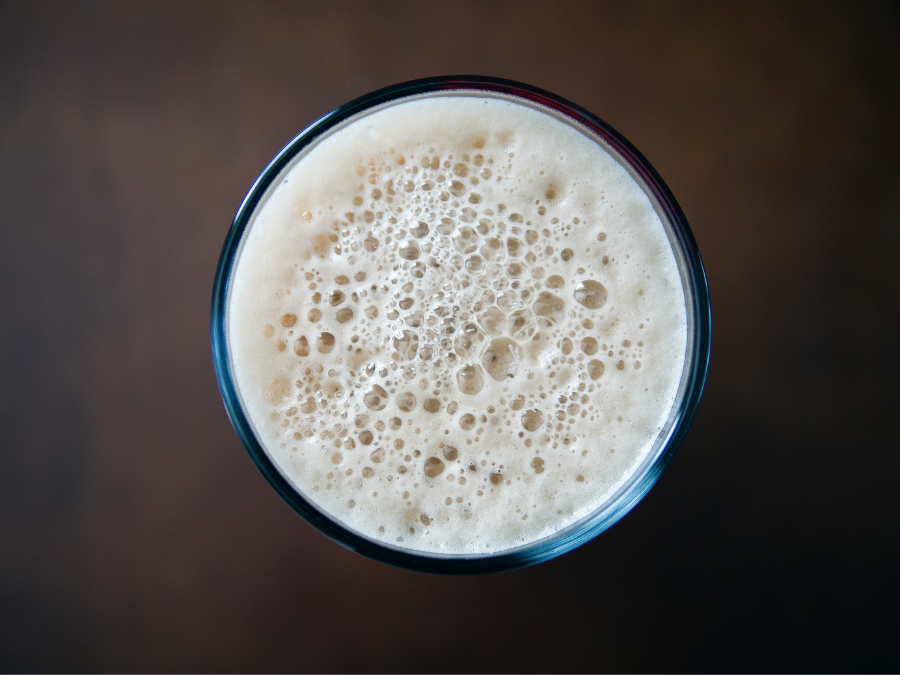In recent days, the phenomenon of ‘drinkflation’ has made mainstream headlines in the UK. But what does drinkflation mean? Some have accused brewers, from next month facing changes to how the UK taxes alcohol, of cutting the strength of their beer to pay less duty but keeping prices the same. However, there are other factors at play.
A number of brewers operating in the UK have released lower-abv beers in order to reduce costs by saving on duty.
Greene King has dropped the abv of its Old Speckled Hen bottles from 5% to 4.8%, while Shepherd Neame has lowered the abv on its Bishops Finger brand from 5.4% to 5.2% abv.
“Events of the past few years have significantly increased costs for all brewers, from the price of energy needed for the brewing process, through to the price of malt, as well as the glass, cardboard, and aluminium we need for our packaging,” a spokesperson for Greene King tells Just Drinks.
“Reducing the abv is one way we can do this, as it lowers the duty we pay without noticeably affecting the beer’s flavour, and helps offset some of the rising cost of brewing our beers.”
Heineken has also reduced the abv of its Foster’s beer on sale in the UK from 4% to 3.7%. In November, the Dutch brewing giant announced plans to up its prices by almost 16% from the start of this year amid “unprecedented cost increases on a number of critical inputs used to make and distribute beer and cider”.
Speaking to Just Drinks for this article, Heineken reiterated the pressure it had faced from cost inflation and argued another factor in the weakening of its Foster’s brand in the UK was consumers’ growing interest in lower-strength brews.
“We know consumers are increasingly choosing lower abv products as part of a balanced lifestyle. Acknowledging this trend, we made the decision to brew Foster’s lager at a slightly lower abv”, a Heineken UK spokesperson says. “Reducing the alcohol content of one of our highest volume brands removes millions of alcohol units across the UK, aligned to our long-held position of promoting moderation.”
What are the changes in UK duty?
Currently, if a brewer makes 20 litres of 5% abv beer, they have to pay 19.08 pence (£0.019) in duty per litre for each per cent of alcohol. At 5% abv, that works out at 95.40 pence for a litre, making 20l cost £19.08 in duty. This tax rate of £19.08 per litre of alcohol in a beer applies to any beer that is more than 2.8% abv, up to 7.5%.
Under the revised alcohol tax duties, which were announced during the UK’s spring budget in March, the government rejigged how alcohol was taxed and introduced a number of increases for higher abv drinks and cuts for lower abv products.
A government spokesperson says: “Since 2020, the government has been delivering on its commitment to review the outdated and complex alcohol duty system, which will see the biggest reform of alcohol duties for 140 years.
“From 1 August 2023, all alcohol will be taxed by strength, putting public health at the heart of alcohol duty. This will help to target problem drinking by taxing products associated with alcohol-related harm at a higher rate of duty.”
Come 1 August, the duty on beer of at least 3.5% but less than 8.5% abv will be £21.01 per litre of alcohol in the product. So, if you make 20l of 5% abv, the liquid in total will contain one litre of pure alcohol and the duty will be £21.01, compared to £19.08 now.
Therefore, under the incoming tax regime, for the tax bracket ‘at least 3.5% but less than 8.5% abv’. brewers are facing a duty increase of 10.1%, which the government has based on the Retail Price Index, essentially trying to keep it in line with inflation.
At this point, it is worth underlining that the UK government is actively promoting lower abv drinks to benefit consumer health.
“This new system will incentivise the production and consumption of lower strength products by introducing a reduced rate of duty for products of a lower alcohol by volume. Additionally, all draught products below 8.5% abv sold in containers of 20 litres or more will receive a reduced rate of duty, incentivising consumption of lower strength products in pubs,” the UK government spokesperson says.
Furthermore, under the current UK tax regime, the taxable range for mid-strength beer is 2.8% to 7.5% abv. From 1 August, that will be tweaked to a range of 3.5% to 8.5%.
That 0.7 percentage point increase in what counts as a low-strength beer for tax purposes opens the door for brewers to make beer from 3.4% abv down and be taxed £9.27 per litre of alcohol in the product.
Vault City Brewing’s head of marketing Richard Wardrop says the Scotland-based brewer is going to produce a number of low-strength or ‘table beers’ that would be in the 2.5% to 3.4% abv range. “These can be on the shelf at a much more attractive price point because of the duty changes,” he explains.
Would Vault City consider dropping the abv on some of its current products to benefit from the duty changes? “It's easier for us to try a new product at a different abv,” Wardrop says. “[It’s] probably something that we will monitor and see what the reaction is like because, if a lot of the bigger craft beer brands do it and people respond well to it, then it would make sense for us but, right now, it’s just as easy for us to look at a new range.”
The danger of unintended consequences?
While some may point to the upcoming tax changes in August and argue the lowering of abv levels represent an unscrupulous cash grab by brewers, it is not the complete picture.
Labelling the lowering of abv as simple ‘drinkflation’ might, right now, be technically correct but it fails to take into account the lifting of a duty freeze set in place in 2020 and the other cost pressures facing brewers, not to mention the government push towards lower-strength beers.

It is also worth noting that, for a brewer in the ‘at least 3.5% but less than 8.5% abv’ range, they would have to knock 0.5 percentage points off the abv to offset the 10% duty increase.
Heineken has so far only reduced the abv on Foster’s by 0.3 percentage points. The cut on Bishops Finger is also at 0.3, while Greene King has opted for 0.2 percentage points off Old Speckled Hen. None of these adjustments actually offset the duty tax they will have to bear in August. However, it does pass a chunk of it onto the consumer through the sale of a lower-strength product for the same price.
Brewers in the UK big and small will point to the increasing costs they are facing year on year, as well as the appeal for lower abv products from consumers.
“In line with other breweries, and most food and drink producers, we have seen significant increases in the cost of raw materials, energy and energy-related products such as glass. These increases are well above the headline rate of inflation. Whilst we are doing everything possible to mitigate these costs, we have had to increase the price of all our beers,” Shepherd Neame tells Just Drinks.
Come August, the UK will see a shift in how brewers have to calculate the tax duty on their brands. It is actually too earlier to really tell if this will result in a plethora of lower same-brand abv beers hitting the market, new ranges, or just the status quo.
What is clear is that, for the next year, there will be uncertainty, some on the part of the brewers, but also on the part of the UK government.
What if every brewer decided to produce a large range of lower abv brands and they took off? Yes, it would be in line with the government’s health ambitions, but it would have a major impact on the amount of tax the Treasury accrues from the alcohol sector.
“It’s very complicated and it’s really going to take a while to see what the impact it is going to have," said UK Society of Independent Brewers member Barry Watts. "But, like anything, it’s really important, because the alcohol taxation system can create signals and incentivise innovation, and actually encourage new industries in the sector.
“If it goes wrong, it can stifle the whole sector. These are quite experimental new changes and we’re going to see how they work out for the sector. That’s why it’s really important the government’s policy is to review it in three years’ time. It’s really important to keep track to make sure that there’s no unintended consequences for small breweries and others.”









